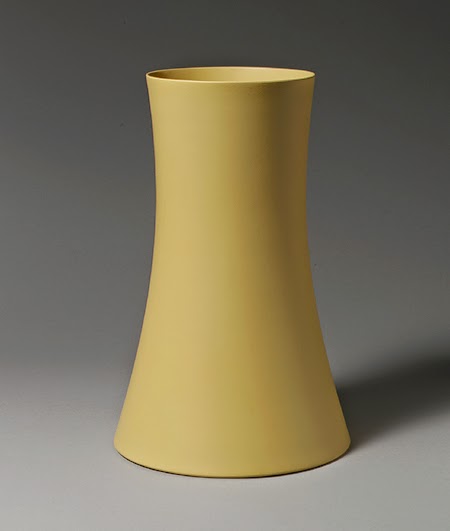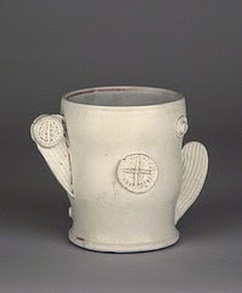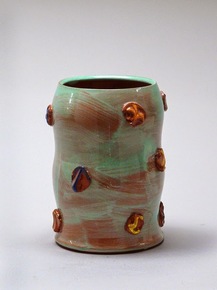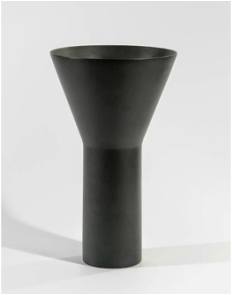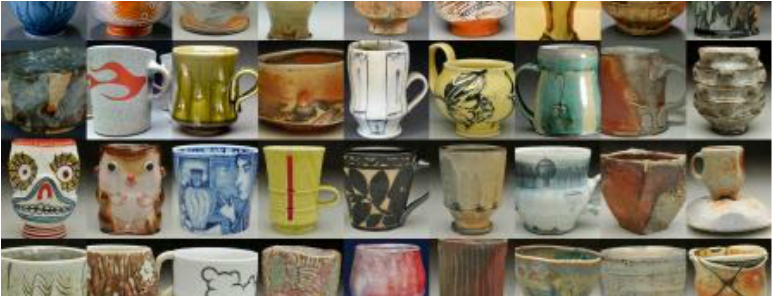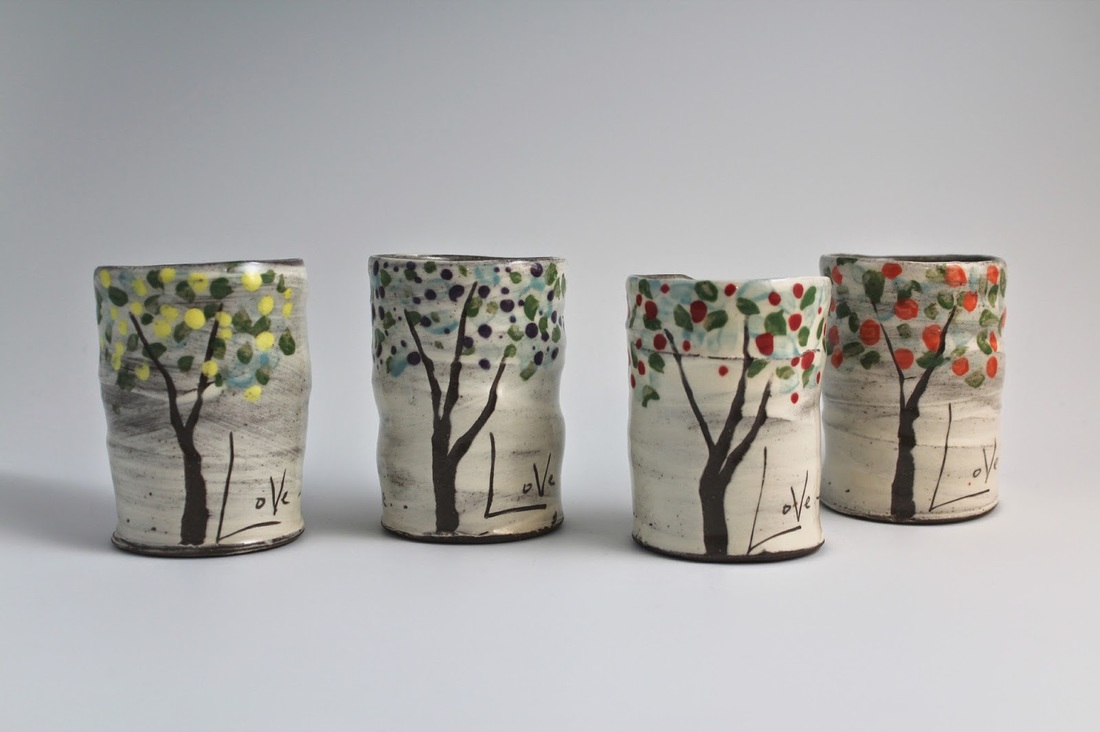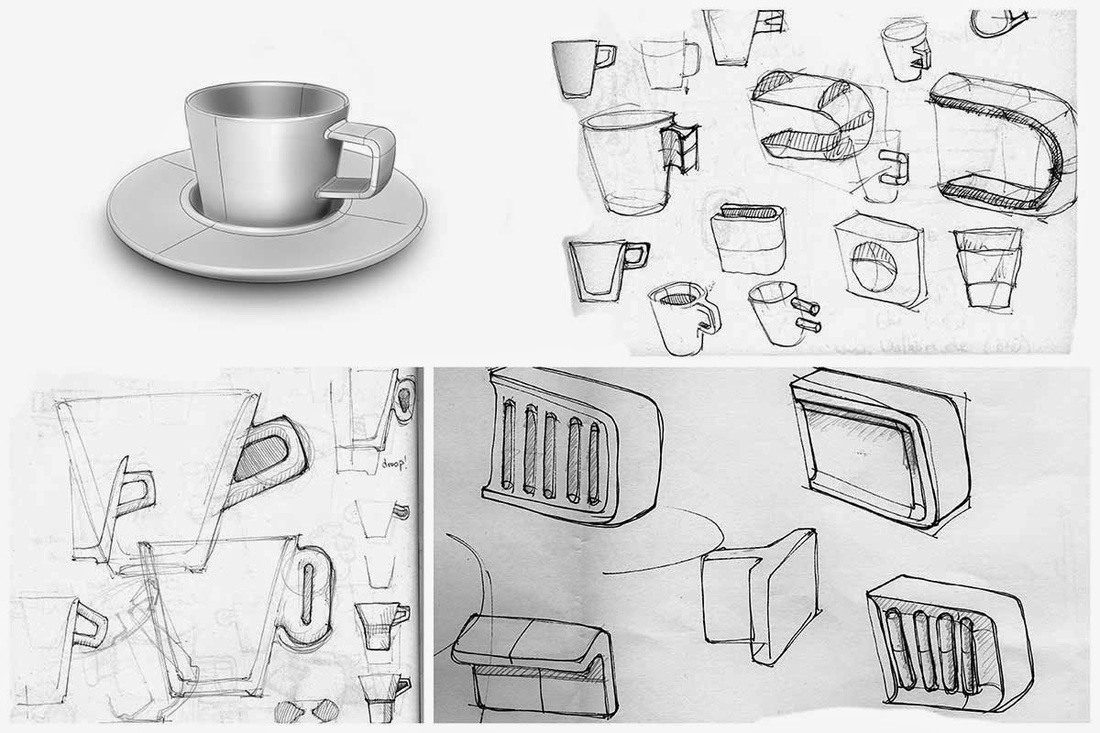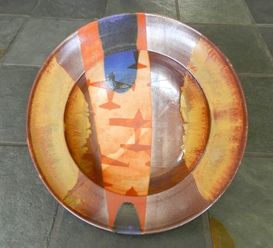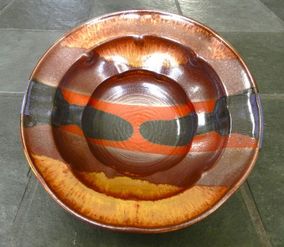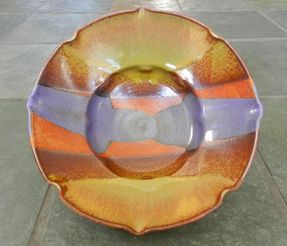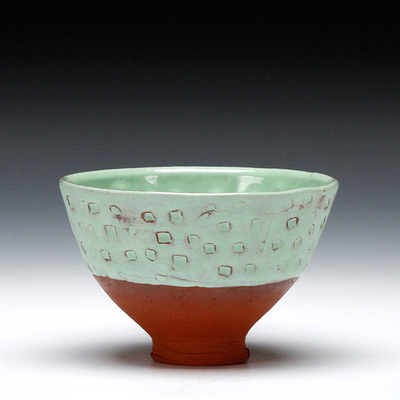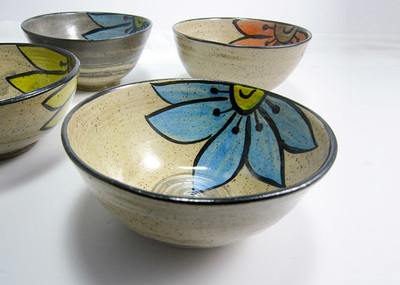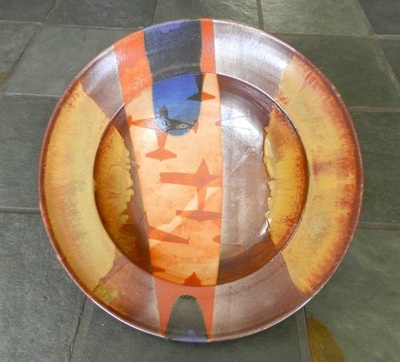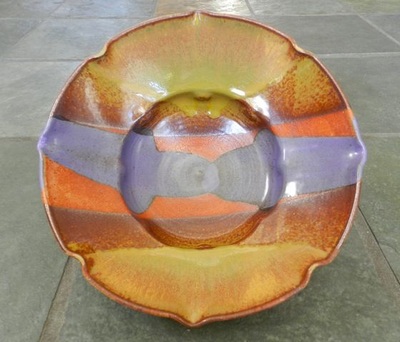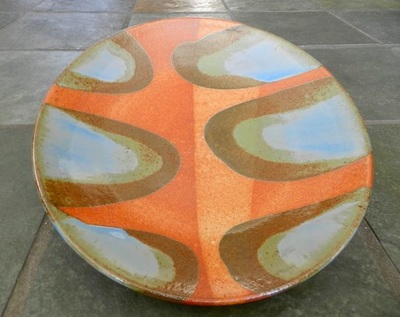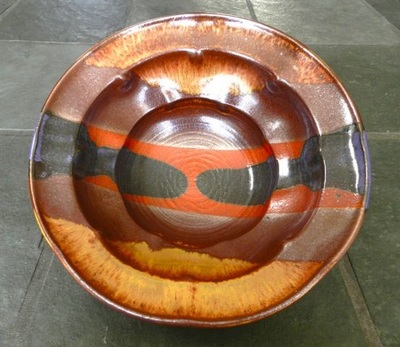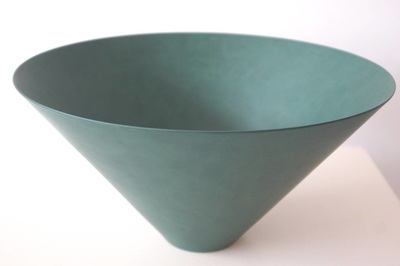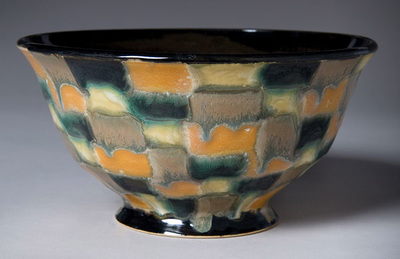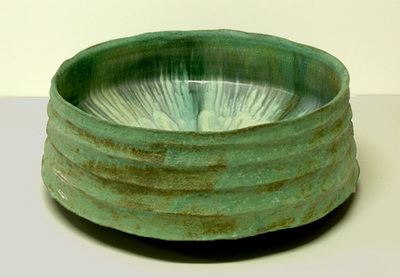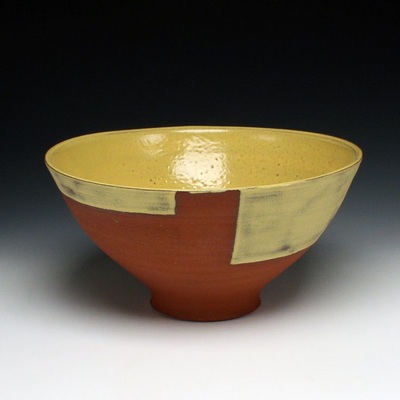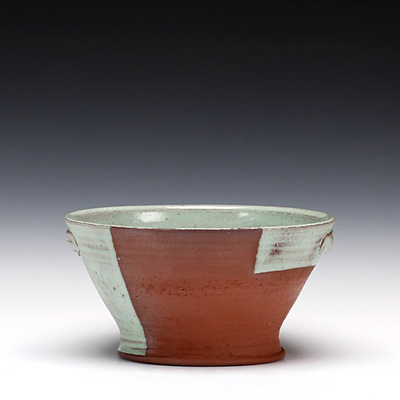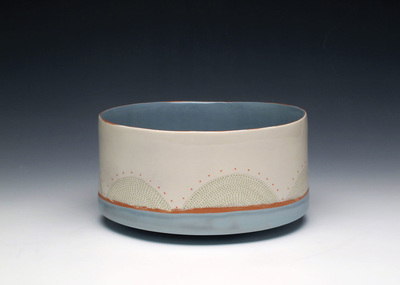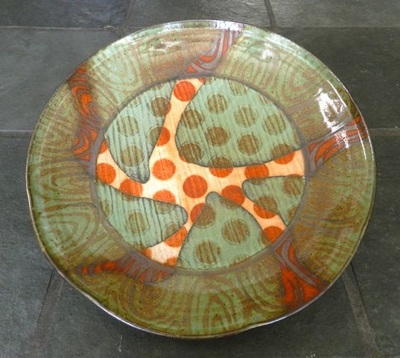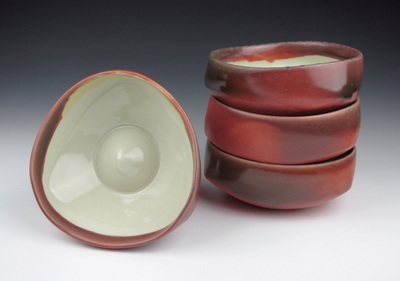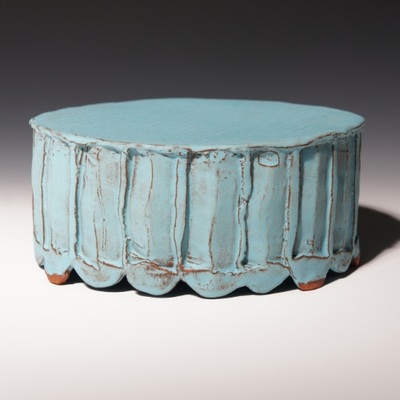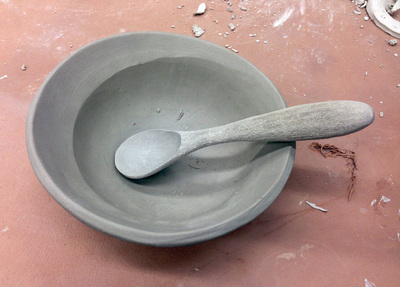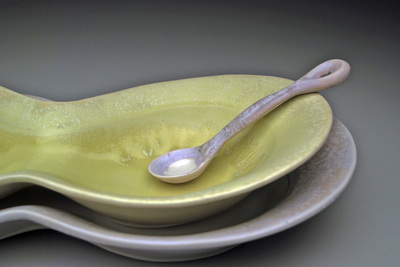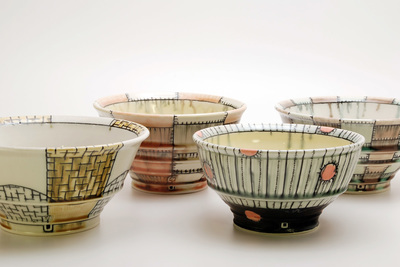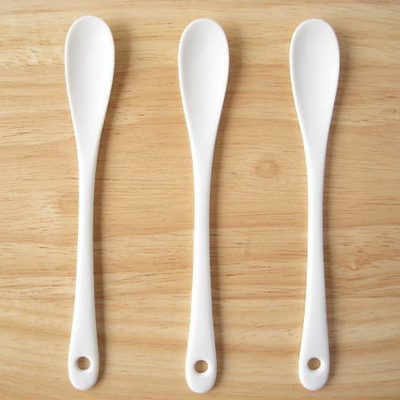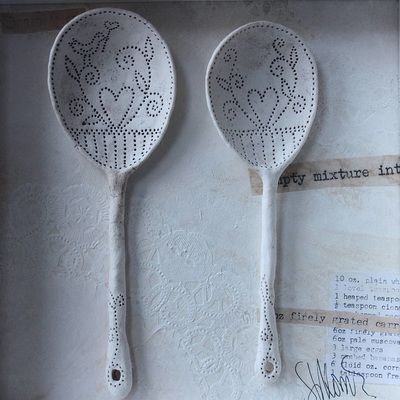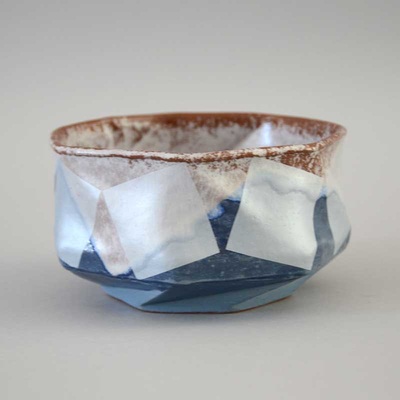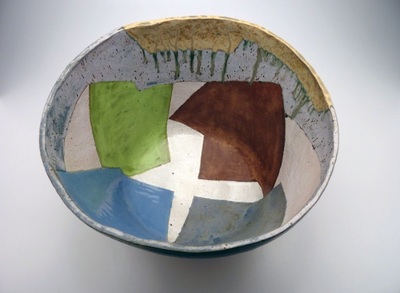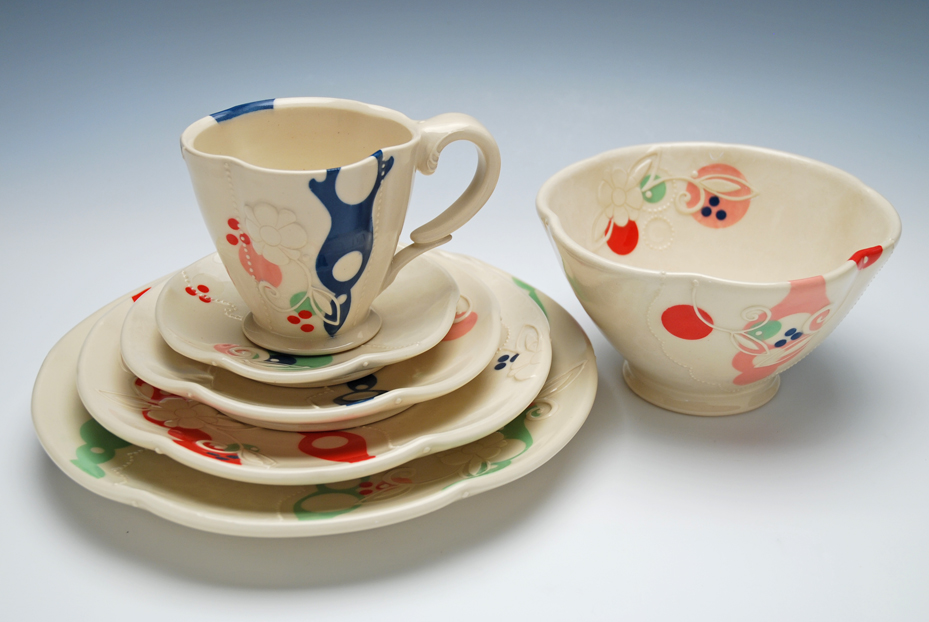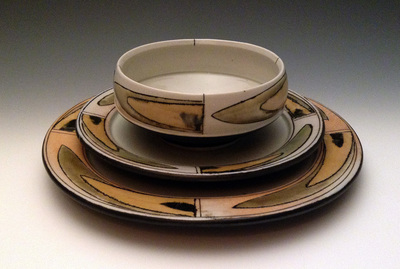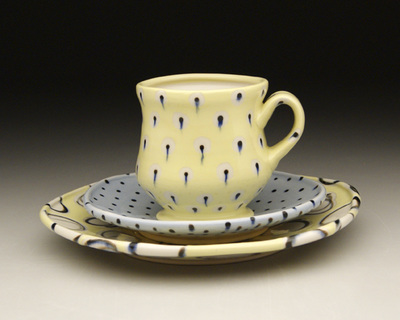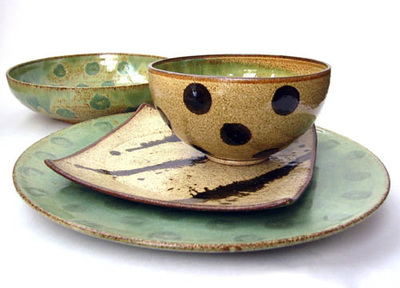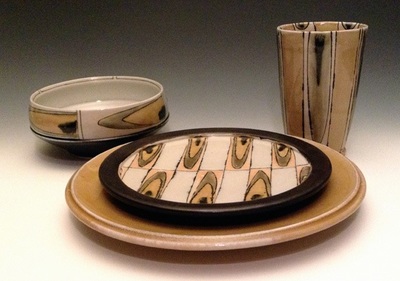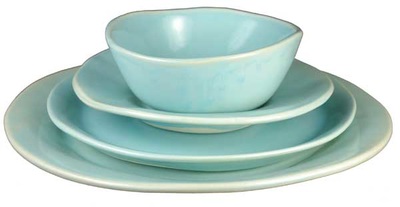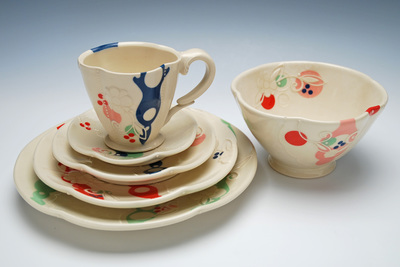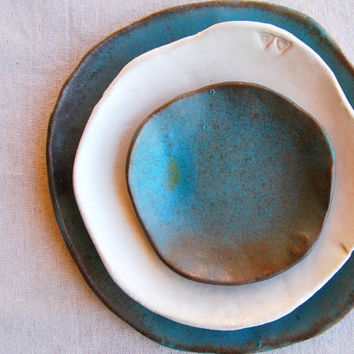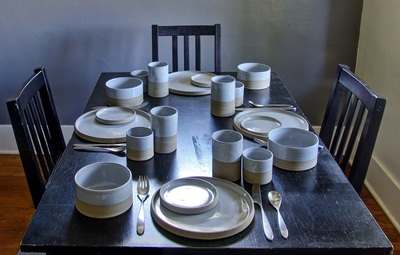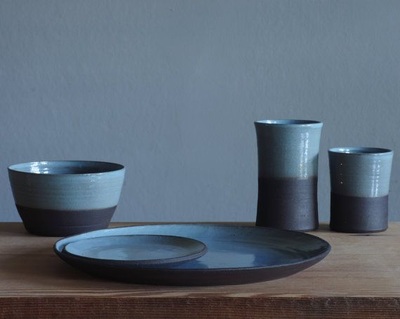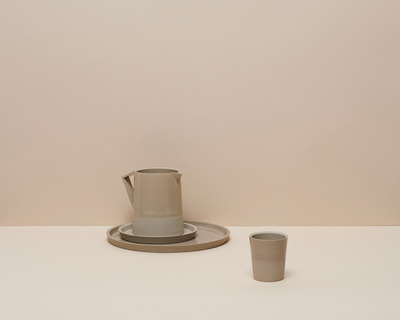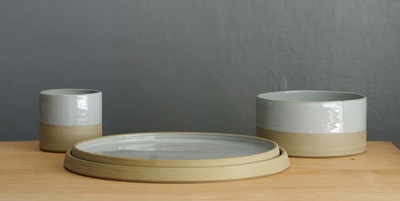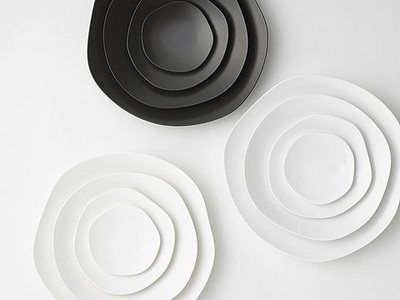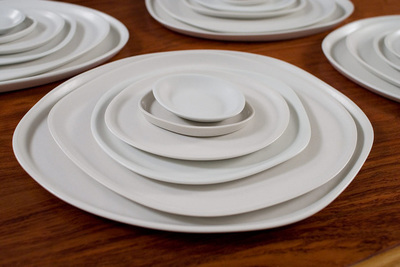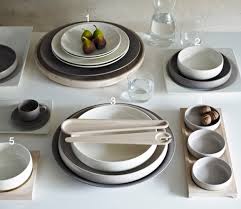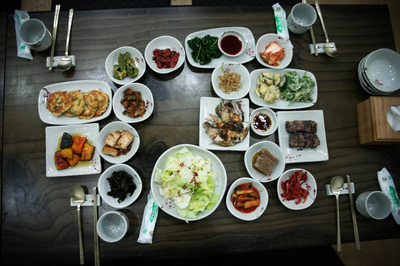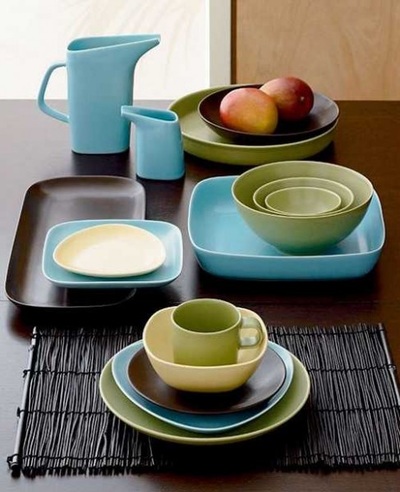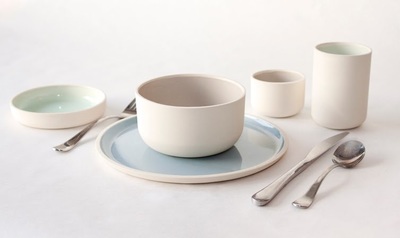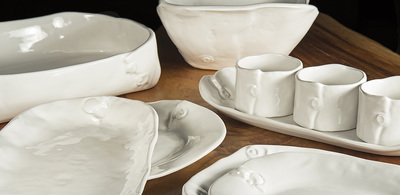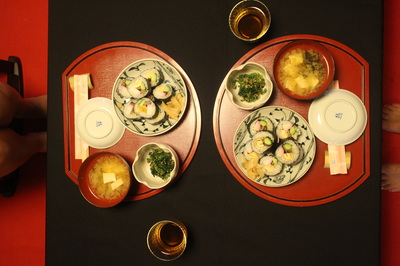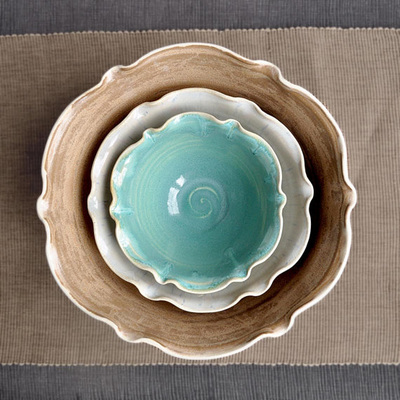|
Cylinder Forms.
The wheel is a very useful tool for creating hollow forms that are the basis for many functional/utilitarian objects. In our first project you will be exploring the techniques and processes used to create basic cylindrical forms that will serve a foundational element to work made on the wheel. In the process of this first projects you will learn how clay is prepared for throwing by wedging, how clay responds to your touch on the wheel and how to raise clay to achieve hight in your forms. The majority of this project is centered on technical skills that will help build your ability to manipulate clay in to forms of your choice. There will be class demos on the processes associated with throwing on the wheel and how to use these forms as the foundation for addition of hand made elements. In addition to these demos I encourage you to explore the vast examples of the throwing process on line and in print. YouTube, Ceramics Arts Daily and other sources are available for you to research and explore. As always practice improves skills, so in addition to your research, engage the material as often as possible to build your techniques. Project Requirements: Using 1 1/2 - 2 pound balls of clay, work on your throwing skills until you can center, open, raise and produce a cylinder with uniform thickness in the walls. Use the cylinders produced for building upon and creating sculptural vessel forms. The use of slab and coils will be the main additive element for transforming your cylinders into complex forms. You will need to produce: 5 Cylinders (coffee mug proportions) 5 Cylinders Total must be turned in for final assessment. |
Once you have made your cylinder let them slowly dry to a soft leather hard state. Keep them at the moisture level by wrapping them tightly in plastic bags. We will be cleaning up thee bottoms when they are at this state of dryness.
In addition to the throwing the cylinder forms we will experiment with additive elements on the surface of the cylinder to create movement and personalized cylinders that express your content and attitudes.
When your cylinders are Bone-dry we will finish them with slips, allowing you to decide their color and design.
We will discus Bisque firing, the first step in the firing process that turns Green Ware into Bisque ware by heating and removing all physical water. At this state clay can no longer be slaked down and recycled. At this state glaze is applied to the bisque ware and loaded back into the kiln for the Glaze firing.
Project Goals:
Develop Wedging and Throwing Skills
Develop Trimming Skills
Learn to Manage Clays Moisture Levels
Experience Using Slips, Sprigging, Carving and Glazing
Learn how to Load Kilns and Understanding of the Firing Process
In addition to the throwing the cylinder forms we will experiment with additive elements on the surface of the cylinder to create movement and personalized cylinders that express your content and attitudes.
When your cylinders are Bone-dry we will finish them with slips, allowing you to decide their color and design.
We will discus Bisque firing, the first step in the firing process that turns Green Ware into Bisque ware by heating and removing all physical water. At this state clay can no longer be slaked down and recycled. At this state glaze is applied to the bisque ware and loaded back into the kiln for the Glaze firing.
Project Goals:
Develop Wedging and Throwing Skills
Develop Trimming Skills
Learn to Manage Clays Moisture Levels
Experience Using Slips, Sprigging, Carving and Glazing
Learn how to Load Kilns and Understanding of the Firing Process
Drinking Vessels
Cups are the most common vessel form we encounter on a daily basis. They come in varied forms ranging from sturdy coffee cups, delicate tea cups, tall cold beverage tumblers and steins. Cups present a personal interaction like no other ceramic vessel. We experience them through tactile interaction with our hands and intimate connections to our lips. Cup have an ability to connect to their users like no other pottery item. They become part of daily ritual and present a an opportunity for personal connection to a piece of pottery.
Cup Research:
Consider your ideal cup. What shape does it have? Does it have a thin lip or a thick lip? What is your favorite beverage to drink? How would you cup address this beverage? Whats scale is your ideal cup and how does that affect your interaction with act of drinking from it? Does it have a handle? If so what shape does the handle take? Is it a conventional handle, a simple finger loop or a lug? Does the handle present challenges for the user, or does it simply act in a functional manner?
Create sketches of these ideas and work out your thought on paper. Sketches should be to scale with our cups you plan to produce. NO tiny doodles! Make confidant sketches that clearly display your ideas and thoughts. Include notes with your sketches that make note of ideas, direction or design.
Look at the cups you use at home and in your daily life. Go to the store and look at cups. Go to the thrift store and handle things and look for insight for your ideal cup.
Consider how you could link multiple cups into a familiar group. How can you surface design and decoration to link groups together? How can you build visual relationships between cups to create sets. Physical similarity, Visual similarity, Concepts that connect differing items to one another though means other than physical or visual similarity. How can contrast be used to link opposing designs?
Sketches:
TURN IN COPIES OF YOUR SKETCHES!
4 Sketches of Contemporary/Modern Cup Designs
4 Sketches of Ideas for your cup Sets
Turn in copies of your sketches!
Surface: Slips will be used as a surface decoration. Class demos will explore methods of slip use such as Stencil, Mishima, Sgrafitto, Brush Application. Slip must be incorporated into your cups. If you choose to use glaze primarily as your surface decoration, you can incorporate slip into the decoration on your underside and feet of your cups.
Project Requirements:
2 Cups without Handles that exemplify your ideal cup
2 Cups with Handles that exemplify your ideal cup
1 Set of( 2 ) Cups without handles that exemplify your ideal cup. These cups must relate as a set. Sets can be created through physical similarities, concepts that create familiarness through theme, or contrast by design choices that enable other to read them as a set.
Project Goals:
Continued develop wedging and throwing skills Explore forms that are suitable for cups and drinking vessels Learn to make and attach handles as well as dry pieces with attachments. Experience varied slip decoration techniques. Develop personal expression and aesthetic through research and development of ceramic vessels.
Research Resources:
Cup Library on this Site
www.artaxis.org
www.crimsonlaurelgallery.com interpreting the cup
www.accessceramics.org
www.strictlyfunctionalpottery.net/
www.archiebray.org/gallery_exhibitions/auction_13/2013_cup_auction.html
4 Sketches of Contemporary/Modern Cup Designs
4 Sketches of Ideas for your cup Sets
Turn in copies of your sketches!
Surface: Slips will be used as a surface decoration. Class demos will explore methods of slip use such as Stencil, Mishima, Sgrafitto, Brush Application. Slip must be incorporated into your cups. If you choose to use glaze primarily as your surface decoration, you can incorporate slip into the decoration on your underside and feet of your cups.
Project Requirements:
2 Cups without Handles that exemplify your ideal cup
2 Cups with Handles that exemplify your ideal cup
1 Set of( 2 ) Cups without handles that exemplify your ideal cup. These cups must relate as a set. Sets can be created through physical similarities, concepts that create familiarness through theme, or contrast by design choices that enable other to read them as a set.
Project Goals:
Continued develop wedging and throwing skills Explore forms that are suitable for cups and drinking vessels Learn to make and attach handles as well as dry pieces with attachments. Experience varied slip decoration techniques. Develop personal expression and aesthetic through research and development of ceramic vessels.
Research Resources:
Cup Library on this Site
www.artaxis.org
www.crimsonlaurelgallery.com interpreting the cup
www.accessceramics.org
www.strictlyfunctionalpottery.net/
www.archiebray.org/gallery_exhibitions/auction_13/2013_cup_auction.html
Bowl Forms: Open, Transitory, Specialized, Decorative
For this project we will be exploring bowl forms and how to produce them on the wheel. We will engage the bowl in a number of ways, all of which will explore the basic functions and potentials of the form we know and call a "bowl". One of the concepts I would like you to keep in mind for the structure of this beginning level project is "utilitarian". Be mindful and understand that a well made utilitarian bowl can be just a beautiful as it is functional. I would however like to keep things focused on how your bowl form works in this introduction to bowls. Outside of the framework of this project you can and are encouraged to explore decorative objects and sculptural vessels that place the utilitarian aspect of their purpose father down the the list of important aspects, but for the graded part of the project, be UTILITARIAN minded please.
u·til·i·tar·i·an
yo͞oˌtiləˈterēən/
adjective
adjective: utilitarian
1.
designed to be useful or practical rather than attractive.
synonyms:practical, functional, pragmatic, serviceable, useful, sensible, efficient, utility, workaday, no-frills;
Thoughts on the project:
Open forms: Form should be open in nature and without curves that make serving difficult (inward sloping lips or body lines)
Transitory form: Form are meant for things to enter and exit the space of the bowl, not designed for long term storage. (closed forms)
Specialized forms: A design that is specific for a purpose. (serving tureen, salad bowl, ice cream serving bowls, soup bowl, rice bowl) These purposes will dictate and inspire a specific shape and scale. Be mindful of the intended purpose and design work specifically for that bowls intended purpose.
Decorative Form: While this project is meant to explore utilitarian bowls, pay mind to the decoration and visual presence of the piece. How can you make the visual aspect of the bowl attractive and curious while maintaining a utilitarian direction? (sprigs, formal alterations of the bowl when wet or leather hard, trimming for texture and visual effect as well as for the foot)
General guide to proportions for this project: ( your bowl form must be wider than it is tall)
The project:
Each Student will be asked to produce....
SIX (6) Bowl Forms. (1 at FIVE pounds) (3 at THREE pounds) (2 at ONE pound)
All Bowls must have a TRIMMED FOOT
2 of the bowls must be ALTERED
1 of the bowls must be designed as a serving bowl and include a serving utensil(s) made of clay
Bowl Library on this site
www.artaxis.org
www.accessceramics.org
www.strictlyfunctionalpottery.net/
u·til·i·tar·i·an
yo͞oˌtiləˈterēən/
adjective
adjective: utilitarian
1.
designed to be useful or practical rather than attractive.
synonyms:practical, functional, pragmatic, serviceable, useful, sensible, efficient, utility, workaday, no-frills;
Thoughts on the project:
Open forms: Form should be open in nature and without curves that make serving difficult (inward sloping lips or body lines)
Transitory form: Form are meant for things to enter and exit the space of the bowl, not designed for long term storage. (closed forms)
Specialized forms: A design that is specific for a purpose. (serving tureen, salad bowl, ice cream serving bowls, soup bowl, rice bowl) These purposes will dictate and inspire a specific shape and scale. Be mindful of the intended purpose and design work specifically for that bowls intended purpose.
Decorative Form: While this project is meant to explore utilitarian bowls, pay mind to the decoration and visual presence of the piece. How can you make the visual aspect of the bowl attractive and curious while maintaining a utilitarian direction? (sprigs, formal alterations of the bowl when wet or leather hard, trimming for texture and visual effect as well as for the foot)
General guide to proportions for this project: ( your bowl form must be wider than it is tall)
The project:
Each Student will be asked to produce....
SIX (6) Bowl Forms. (1 at FIVE pounds) (3 at THREE pounds) (2 at ONE pound)
All Bowls must have a TRIMMED FOOT
2 of the bowls must be ALTERED
1 of the bowls must be designed as a serving bowl and include a serving utensil(s) made of clay
Bowl Library on this site
www.artaxis.org
www.accessceramics.org
www.strictlyfunctionalpottery.net/
Sets: Place Setting & Serving Sets
A place setting is a collection of forms centering around consumption, decoration and versitility. As the maker you will be engaging a challenge that require you to possibly engage a particular meal, a cultural food practice, a specific person, or a dining method. On top of all of this you will need to find a way to unify all parts and pieces together in a way that makes the read as a set or group. There will be many ways to make this happen. You can utilize form, scale, glaze and surface decoration to build relation and connection.
What does a place setting do for the user? In my opinion it provides utility through its ability to hold, serve and present all aspects of a particular meal. If the meal is a multi course food experience the user may want to have a place setting that includes a small or large bowl for soup, a small plate for salad, a small bread or desert plate, a large plate for the main dish and some form of drinking vessel. What if we choose to shift culture and move away from typical American cuisine and go Asian in our dining scenario? Is it a meal of sushi, or a Ramen noodle meal? Given those types of food and cultural shifts our place setting might look very different. Plates may be flatter or non round, our bowls may be considerably smaller to hold side dishes and sauces; or we may need a large bowl to accommodate the Ramen noodles, or maybe a large bowl of Pho. There are a lot of "what ifs" in the planning of this project, Please take the time to plan you place setting, it will pay off in the end. Choose a meal type or culture that you will be building for, then plan the design or aesthetic in order to unify the collection visually as a matched set.
A serving set follows many of the same ideas of the place setting, but instead of being a private use piece for the diner, the serving set provides the means to bring the meal to the diners and or plates they are about to use. As with the place setting you must choose your meal type and cultural food experience.
Lets use a typical Western Cultural meal as a conversation point. This meal might include a main dish and three side dishes. The main course being pork chops (imagine fried marinated tofu if your a vegetarian), a side of potatoes and a side of green beans and a salad. This particular meal might require a large low bowl or plate for the Pork/Tofu, two medium size bowls for the potatoes and green beans and a large salad bowl. This typical Western Culture meal requires 4 large-medium pieces.
Now imagine its a Korean Style family meal. If you're not familiar with Korean food I suggest you experience it. It is an amazing food experience. From my experience the table is covered in serving bowls. Large bowls and plates for the multiple main components and then a dozen or so small bowls filled with side dishes and sauces. As with the place settings, the cultural direction of the serving set can and will dramatically alter its scale, and design, so please plan carefully and think your project through.
The project:
beginning students:
What does a place setting do for the user? In my opinion it provides utility through its ability to hold, serve and present all aspects of a particular meal. If the meal is a multi course food experience the user may want to have a place setting that includes a small or large bowl for soup, a small plate for salad, a small bread or desert plate, a large plate for the main dish and some form of drinking vessel. What if we choose to shift culture and move away from typical American cuisine and go Asian in our dining scenario? Is it a meal of sushi, or a Ramen noodle meal? Given those types of food and cultural shifts our place setting might look very different. Plates may be flatter or non round, our bowls may be considerably smaller to hold side dishes and sauces; or we may need a large bowl to accommodate the Ramen noodles, or maybe a large bowl of Pho. There are a lot of "what ifs" in the planning of this project, Please take the time to plan you place setting, it will pay off in the end. Choose a meal type or culture that you will be building for, then plan the design or aesthetic in order to unify the collection visually as a matched set.
A serving set follows many of the same ideas of the place setting, but instead of being a private use piece for the diner, the serving set provides the means to bring the meal to the diners and or plates they are about to use. As with the place setting you must choose your meal type and cultural food experience.
Lets use a typical Western Cultural meal as a conversation point. This meal might include a main dish and three side dishes. The main course being pork chops (imagine fried marinated tofu if your a vegetarian), a side of potatoes and a side of green beans and a salad. This particular meal might require a large low bowl or plate for the Pork/Tofu, two medium size bowls for the potatoes and green beans and a large salad bowl. This typical Western Culture meal requires 4 large-medium pieces.
Now imagine its a Korean Style family meal. If you're not familiar with Korean food I suggest you experience it. It is an amazing food experience. From my experience the table is covered in serving bowls. Large bowls and plates for the multiple main components and then a dozen or so small bowls filled with side dishes and sauces. As with the place settings, the cultural direction of the serving set can and will dramatically alter its scale, and design, so please plan carefully and think your project through.
The project:
beginning students:
- Produce two place settings. (each set must be a different design)
- Each place setting should include a minimum of 4 pieces.
- All objects must be primarily wheel thrown. (you may alter and modify after they are thrown)
- The objects in your place setting must visually relate to each other either formally, through surface decoration or through some unifying design element. They must read as a set without question or doubt.
- In addition to the project requirements above, you will also produce a Serving set designed for two.
- Serving sett must include 4 pieces. These pieces must be designed for a particular meal shared by two people.
- The serving set should be of a scale that represents the amount of food being served and the type of food being served (In other words, being that the meal is only for two, your pieces will not need to be large enough to serve a family of 5, but rather small enough for two people.)
Kristen Kieffer
